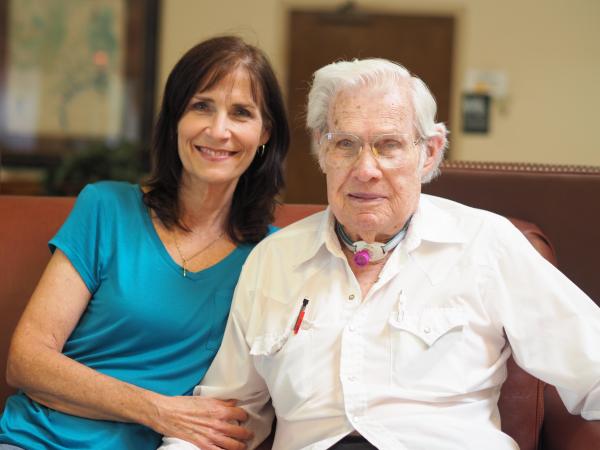Distinguished Flying Cross Veteran tells his World War 2 story

Meet Dripping Springs resident Maurice Clark. A unique man with a story worth telling.
Clark was drafted into the U.S. Army in 1943 at the age of 18,. He was assigned to the Army Tank Corps at Fort Knox, Kentucky, which presented an immediate problem to him. He didn’t like tanks. Instead Clark wanted to join the Army Air Corps where he felt he could make a greater contribution.
“Well I knew the name of a bird colonel in the Army Air Corps. I caught up with him and visited with him on the phone,” Clark said. “I told him I didn’t care for the Tank Corps, not my preference, and that I wanted to be in the Air Corps. He was sympathetic and took down all my information and agreed to see if he could figure out a way to get me transferred. It took him a while.
“Weeks later a guy came to see me, and told me I was being transferred to the Army Air Corps—pilot training he said. I only had a high school education, no college, but it was OK. I started flight training at Sioux Falls in South Dakota in a single engine Piper Cub-- then another problem happened. They decided they had too many pilots, and they decided they were going to send everybody back except for maybe one or two. I hid for about 2 days in the barracks, then after everybody was gone they approached me about becoming a radio operator in a B-29 bomber. Thinking back, the colonel who helped me transfer might have had something to do with that as well.” Clark said.
The new orders were just fine with him. In his opinion the B-29 Superfortress was the “best bomber we had in World War 2.” Clark reported for B-29 training at Alamogordo New Mexico. There he learned all about his new aircraft, navigation, the radios he would work with, and Morse code.
“The B-29 bomber was much faster than the old B-17 Flying Fortress we used in Europe—much faster,” Clark said. “We called the B-29 the Superfortress. It was specifically designed to be used against the Japs. My job as the radio operator was to give position reports to the ground, basically any communication with the ground went through me in Morse code. I was also the second navigator and would become the primary navigator in the event something happened to the primary navigator. We would get our bombing run instructions before takeoff, but sometimes also got instructions while in the air.”
One crucial time his plane received instructions while in the air was when the Enola Gay (also a B-29 Superfortress) dropped the first atomic bomb called “Little Boy,” on Hiroshima, Japan, on Aug. 6, 1945. “We had been told something big was about to happen, but not much else,” Clark said. Then while in the air, Clark’s crew were warned away from the Hiroshima area and instructed to proceed to their secondary target.
Clark’s aircraft was called “Lil Butch,” and belonged to the 93rd Bomb Squadron, 19th Bomb Group, 20th Air Force. And while “Lil Butch may have been state of the art for 1945 with a pressurized cabin and remote (analog computer controlled) machine gun turrets, what impressed Staff Sergeant Clark was the sheer size of the airplane and the number of gunners it had. “We had gunners. The bombardier was also a gunner, a gunner flight engineer behind the co-pilot, two waist gunners, a tail gunner, and a roof gunner,” Clark said. “I think they were all 50 cals.”
The crew was also individually equipped with sidearms, the Colt 1911 .45, and parachutes. “But we didn’t wear our parachutes. They impeded mobility. We would only put them on if we were in trouble,” Clark said.
Clark was based out of Guam in the Pacific Theatre and completed 26 combat missions during his service. “Guam was about 1,500 miles away from Tokyo and we would fly our bombing runs at about 200 miles per hour, so they were long flights,” Clark said.
Clark and the crew of “Lil Butch,” were shot up several times, but there was one horror flight where they almost bailed over the pacific. “We got shot up several times, but this one was the worst. We lost all, but one, one-and-a-half, engines. Four shells came into the plane. One came up right through the floor…another shell came up through the cabin and exploded right above my head,” Clark said.
Next week, how the crew of “Lil Butch” earned the Distinguished Flying Cross.


